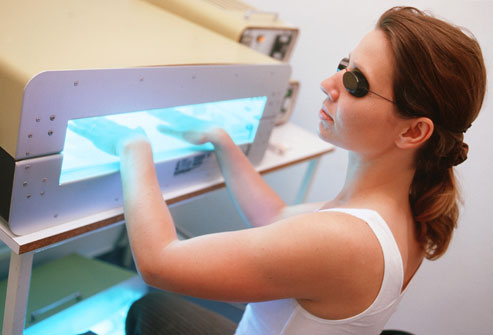Light therapy has been known to humanity since ancient times, even being used by the ancient Egyptians and Greeks. However spectral response characteristics of solar radiation is not constant: it often changes depending on the season, time of day, geographical area, climate state of region and some other factors. This circumstance motivated scientists to create artificial light sources for еру use for medical purposes: irradiation of patients with different diseases. Using lights for psoriasis is getting more popular as an alternative treatment method.

Sun light consists on a visible spectrum, which is caught by visual analyzer, and ultraviolet and infrared rays, which are not sensed by the human eye. Invisible parts of radiation influence humans significantly. Infrared spectrum rays warm the body, and ultraviolet light stimulates melanogenesis – skin pigment, which determines skin colour and which is responsible for vitamin D and some bioactive substances interchange. More information about Sunlight and Vitamin D you can find in our blog https://uvb-lamps.com/blog/sunlight-and-vitamin-d/.
In case of psoriasis ultraviolet radiation of a certain spectrum is used. There are three spectra: A, B, and C. The most precious from the medical point of view is A-spectrum (wave length is 320-400 nm) and B-spectrum (wave length is 280-320 nm).
Lamps UVB with narrowband radiation spectrum 311 nm +/- 2 nm are used for UVB phototherapy. This method is one of the most effective in psoriasis treatment. Due to its safety and therapy efficiency ratio – UVB vitiligo lamp treatment has no competition.
Advantages of the method:
Comments